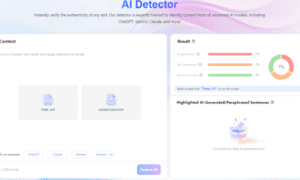What is Arbitrage EA?
In the Forex market, Arbitrage EA (Expert Advisor for Arbitrage Trading) is an advanced automated trading system designed to capitalize on price discrepancies between brokers or related assets to generate profit.
Unlike conventional trading strategies that rely on market trends, arbitrage trading focuses solely on temporary price differences, making it one of the few approaches that can yield consistent profits regardless of overall market direction. This method is widely used by hedge funds, financial institutions, and professional traders to exploit inefficiencies in the financial markets.
How Does Arbitrage EA Work?
An Arbitrage EA operates by:
- Continuously scanning the market to detect price discrepancies between trading platforms or correlated currency pairs.
- Simultaneously opening buy and sell positions to capitalize on the price difference.
- Closing trades as soon as price equilibrium is restored, securing profits without relying on trend predictions.
For example, if an Arbitrage EA detects that the price of EUR/USD on Broker A is higher than on Broker B by a few pips, it will buy EUR/USD on Broker B and sell it on Broker A, profiting from the difference.
ð See more at: https://ecomforex.com/
This strategy is particularly attractive because it minimizes exposure to market risk. However, it also presents certain challenges, such as the need for fast execution and access to brokers that do not restrict arbitrage trading.
Types of Arbitrage EA in Forex Trading
Not all Arbitrage EAs function the same way. There are three primary types commonly used in trading.

Latency Arbitrage EA
This is the most widely used arbitrage strategy, which exploits price latency between brokers.
- The EA receives price feeds from a fast brokerand compares them with a slow broker. When a discrepancy is detected, the EA executes trades instantly to capture the price gap.
- This method is highly effective but is increasingly restricted by brokers who implement anti-arbitrage measures.
Triangular Arbitrage EA
This strategy takes advantage of exchange rate misalignments between three different currency pairs.
- If the exchange rate between EUR/USD, USD/JPY, and EUR/JPY is inconsistent, the EA simultaneously buys and sells different pairs to capitalize on the discrepancy.
- It is more difficult for brokers to detect, but requires ultra-fast execution and low transaction costs to be profitable.
Statistical Arbitrage EA
This method relies on quantitative market analysis and is commonly used in institutional trading.
- The EA analyzes correlations between different currency pairs or financial instrumentsto identify high-probability trading opportunities.
- It requires extensive historical data and sophisticated algorithms to function effectively.
Selecting the right type of Arbitrage EA depends on a trader’s access to high-speed infrastructure and a compatible broker.
Advantages and Challenges of Arbitrage EA
Advantages
- Arbitrage EA does not rely on market trends, making it a market-neutral strategythat works in any condition.
- It enables high-frequency trading, allowing traders to profit from multiple small opportunities throughout the day.
- When executed correctly, it presents low risksince trades are closed within milliseconds, minimizing exposure to market fluctuations.
- This method is preferred by institutional traders and hedge funds, given its ability to generate consistent returns.
Challenges
- Arbitrage EA requires ultra-fast execution, meaning traders need a low-latency VPS and direct access to a fast broker.
- Many brokers detect arbitrage strategies and implement restrictions, limiting its effectiveness.
- Transaction costs such as spreads and commissionscan significantly impact profit margins, especially if not accounted for in the strategy.
For traders looking to succeed with Arbitrage EA, choosing a reliable ECN/STP broker and using high-speed trading infrastructure is essential.
How to Select the Best Arbitrage EA
Choosing the right Arbitrage EA is critical for success. The following factors should be considered:
- A strong win rate, ideally between 70-85 percent, to ensure consistent profitability.
- Instant trade execution, as even a slight delay can render arbitrage opportunities ineffective.
- Compatibility with ECN/STP brokersto reduce slippage and avoid execution delays.
- A verified track record of performance, including real-time trading results and backtesting data.
- Positive user feedback and support from a reputable provider to ensure the EA functions as expected.
Conclusion
Arbitrage EA is a powerful tool for traders looking to capitalize on market inefficiencies. Unlike traditional trading strategies, it focuses on price discrepancies rather than market trends, allowing for potential profits regardless of the overall market direction.
However, while this strategy can be highly effective, success depends on choosing the right EA, optimizing trade execution speed, and ensuring a suitable broker environment. For traders seeking a reliable, low-risk trading method, arbitrage trading offers an opportunity to achieve steady returns with minimal market exposure.



































